Tunis is the capital of Tunisia. It functions as Tunisia’s center for politics, economy, and culture.
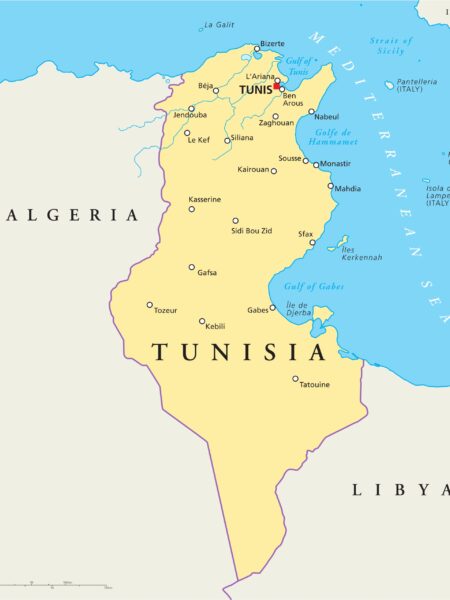
Tunis blends old and contemporary, featuring historical sites alongside modern infrastructure. It’s an educational center housing different universities and research institutions. The city’s importance extends to geopolitics as it is essential in Arab and African diplomatic relations.
Where is Tunis?
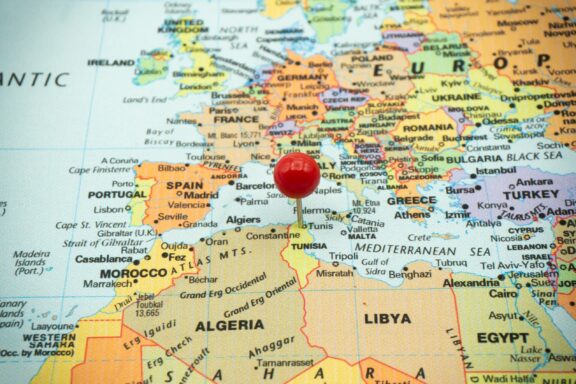
Tunis is situated in the northeastern part of Tunisia, close to the Mediterranean Sea. It lies along the coastal plain and the Lake of Tunis, which separates it from the port area of La Goulette.
It’s located in North Africa, serving as a gateway between the African continent and Europe due to its proximity to the southern edge of the European continent, specifically Italy. Tunisia is relatively close to other major cities like Sidi Bou Said and Carthage, making it a central point for travel and communication.
History of Tunis
Long before becoming a Roman colony, the area where Tunis sits was a Phoenician settlement connected to the dominant city-state of Carthage.
The Phoenicians were great traders and seafarers, and their influence can still be seen in the ancient ruins around Tunis. This era laid the groundwork for the city’s strategic maritime importance.
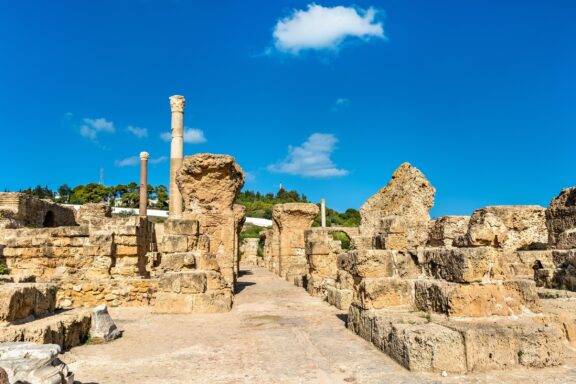
After Carthage fell to Rome in the Punic Wars, Tunis was integrated into the Roman Empire. During this time, the city saw extensive development. Infrastructure like roads and aqueducts were built, as were Roman forums and arenas. The Roman imprint significantly impacted the city’s layout and architecture.
The 7th century brought about a profound transformation when Islamic conquerors swept across North Africa. With this came not only a new religion but also new cultural practices and norms. Arabic became the dominant language, and Islamic architecture, like mosques and medinas, started appearing.
During the Middle Ages, Tunis became a flourishing trade, scholarship, and religious center under several Islamic dynasties, such as the Aghlabids and the Hafsids. The city was prized because of its strategic location for trade routes and intellectual contributions to the Islamic Golden Age.
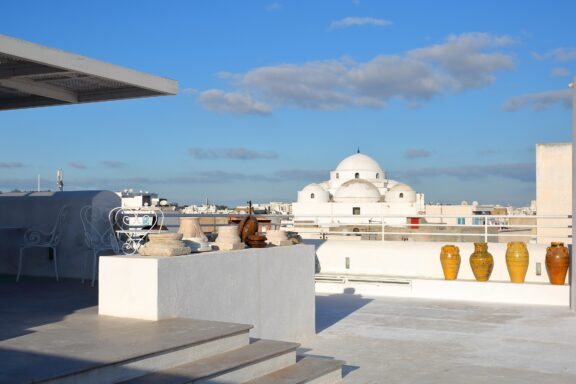
By the late 16th century, Tunis fell under Ottoman influence. While maintaining local autonomy, the city saw an influx of Turkish-inspired architecture like hammams (bathhouses) and palaces. The city also had a strong military presence during this period.
In the late 19th century, Tunisia became a French protectorate. This colonial era introduced European styles of governance and education, and the Ville Nouvelle (“New City”) section of Tunis was developed with wide avenues, public squares, and colonial buildings. French became an official language, and the legal and educational systems were restructured.
Tunisia gained its independence in 1956, and the city transformed into the capital of a modern, independent state. In the decades since, it has been a hub for political activity and social movements, most notably the Tunisian Revolution in 2010-2011, part of the broader Arab Spring, which led to significant political changes in the country.
Features of Tunis
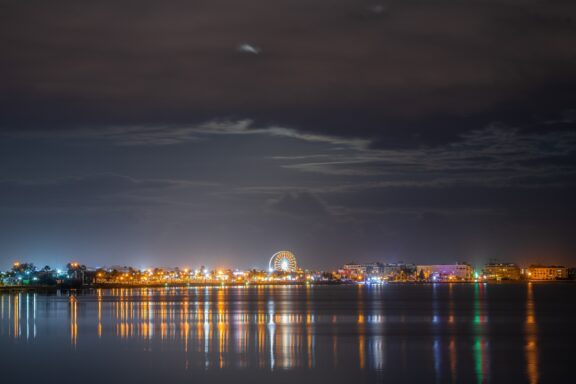
Tunis captivates visitors and residents with its unique blend of traditional and modern elements. The city’s medina is a labyrinthine network of narrow alleys and bustling souks, where the scent of spices fills the air and local artisans display their wares.
Whether you’re walking through the ancient medina, enjoying a coffee in the Ville Nouvelle, or exploring one of its many museums, you’ll find that Tunis offers a multifaceted experience. The city is a vivid tableau where past and present, local and global, coalesce into something distinctly Tunisian.
Geography and Climate
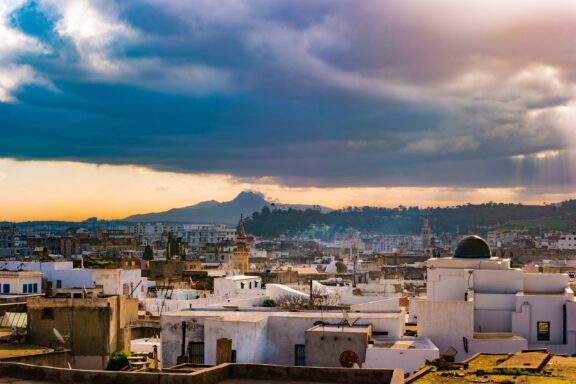
Tunis experiences a Mediterranean climate characterized by hot, dry summers and mild, wet winters. This climate makes the city suitable for a variety of flora and fauna, including olive groves and citrus trees commonly found in the surrounding areas. Rainfall is most common between October and April, while summer temperatures can soar above 30 °C (86 °F).
Population
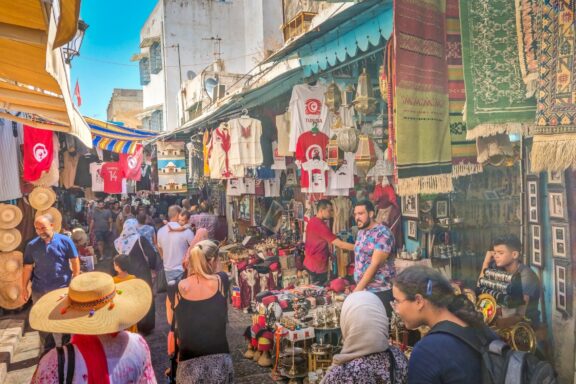
Tunis has a diverse population of over one million people. The city is predominantly Arabic-speaking, with Islam as the primary religion, but there are also small communities of expatriates and minorities, including Europeans and Jews.
The city’s populace is relatively young, with a significant percentage under 30. The city has several universities and research institutions with high education levels.
Economy
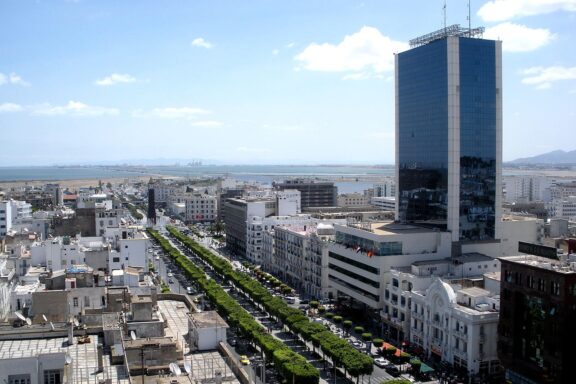
The city serves as Tunisia’s administrative and financial heart, drawing professionals and entrepreneurs alike. Its strategic port plays a key role in import and export activities, connecting Tunisia to other Mediterranean countries and beyond. This logistical advantage makes it a focal point for trade and contributes to the city’s overall economic health.
The service sector in Tunis is highly developed, featuring everything from telecommunications to legal services, which cater to both local and international clients. Technology and innovation are increasingly becoming pillars of the local economy, with numerous tech parks and incubators fostering startups in software development and renewable energy.
The city also acts as a major employment magnet, drawing skilled labor from other parts of Tunisia. Several universities and educational institutions in Tunis supply the local job market with a steady stream of qualified individuals in engineering, healthcare, and finance.
Things to Do and Places to See in Tunis
There is a wide variety of things to do and see in Tunis. Let’s take a look at some of the most popular sites and attractions in Tunis:
1. Zitouna Mosque
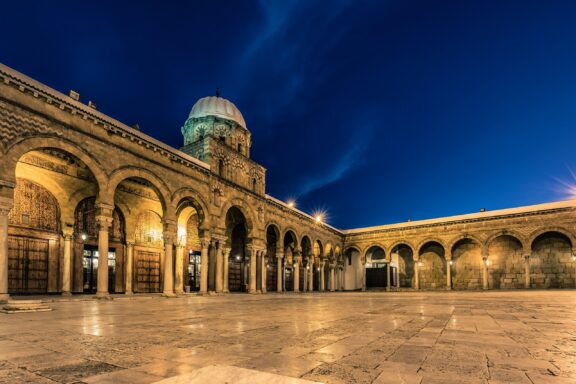
Zaytuna Mosque is an emblem of Tunis’ religious history and academic legacy. As the oldest mosque in the capital, it has served as a cornerstone of Islamic scholarship, making it a must-visit for those interested in religious studies and Islamic architecture.
Guests can explore the mosque’s elaborate geometric designs and Islamic calligraphy. While the main prayer hall is reserved for worshippers, the courtyard and surrounding arcades are open to visitors. Keep in mind that respectful attire is required.
2. Bardo Museum
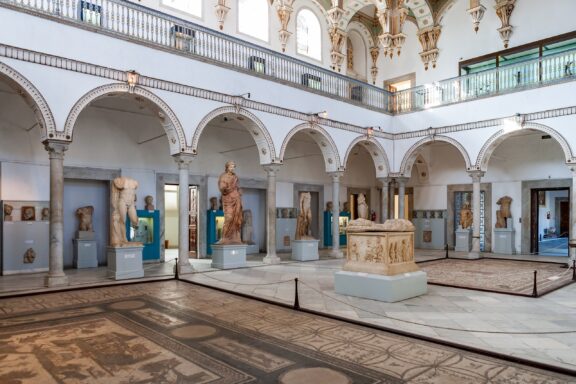
The Bardo Museum, located in a 19th-century palace, serves as a treasure trove of Tunisia’s multifaceted history. From prehistoric artifacts to Islamic art, the museum encapsulates the diverse influences that have shaped the country.
Tourists can immerse themselves in various art forms, including sculptures, textiles, and an impressive collection of Roman mosaics. Guided tours are often available, and the museum is wheelchair accessible.
3. Medina of Tunis
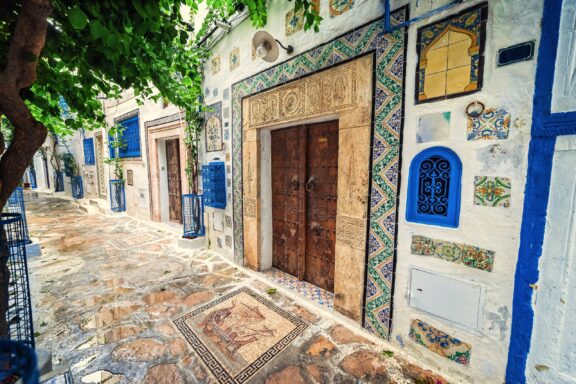
The ancient streets of Hammamet Medina offer a captivating experience. This preserved medieval area showcases the timeless charm of Tunisia through its winding lanes and local crafts.
Tourists can haggle at local markets, enjoy traditional Tunisian food at quaint cafes, and admire the craftsmanship of local artisans. Walking tours are also famous for those interested in the history of the Medina.
4. Avenue Habib Bourguiba
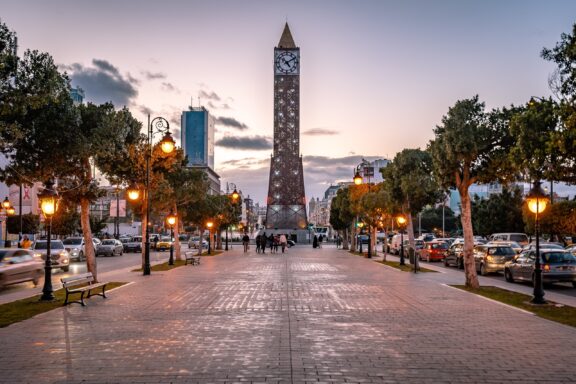
Habib Bourguiba Avenue was named after Tunisia’s first president; the boulevard is a microcosm of the nation’s modern history and aspirations. Lined with cafes, boutiques, and official buildings, the avenue is a promenade that epitomizes the meeting of traditional and contemporary Tunisian culture.
Visitors here can enjoy a leisurely walk down the avenue, indulge in window shopping, or sip local coffee. The area is often buzzing with activity, especially during events and festivals.
5. Cathedral of St. Vincent de Paul
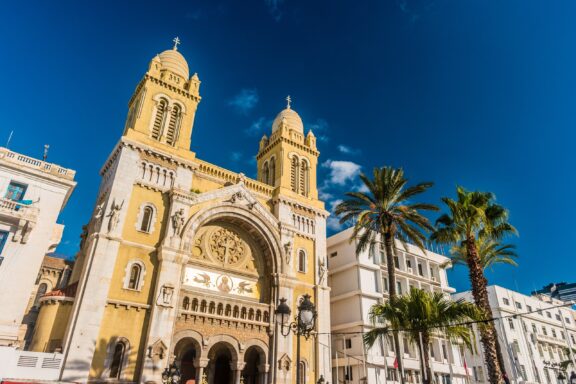
The Cathedral of St. Vincent de Paul is an iconic structure that reflects the rich tapestry of religious diversity in Tunis. Serving as a center for the Roman Catholic community, the cathedral is a visual marvel with its Neo-Romanesque architecture.
Visitors can attend Mass, explore the stunning architectural details, or sit in quiet contemplation. The cathedral is usually open to tourists during non-service hours, and photography is generally permitted.
6. Dar Lasram
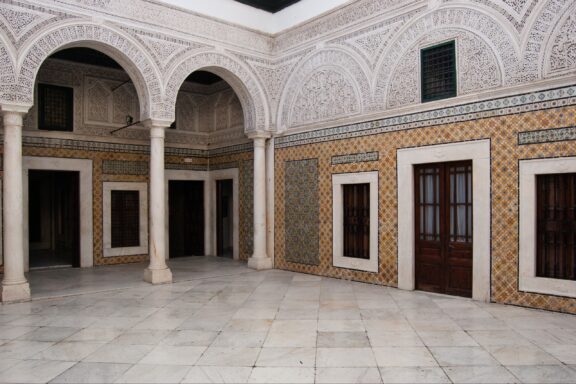
8th-century palace-turned-museum.
Dar Lasram is an architectural gem that transports visitors back to the era of opulent Ottoman residences. This 18th-century palace is a remarkable destination for art, history, and architecture enthusiasts.
Here, you can explore different rooms, each decorated to reflect the other aspects of daily life during the Ottoman period. Some occasional exhibitions and events provide deeper insights into Tunisian history.
7. Sidi Bou Said
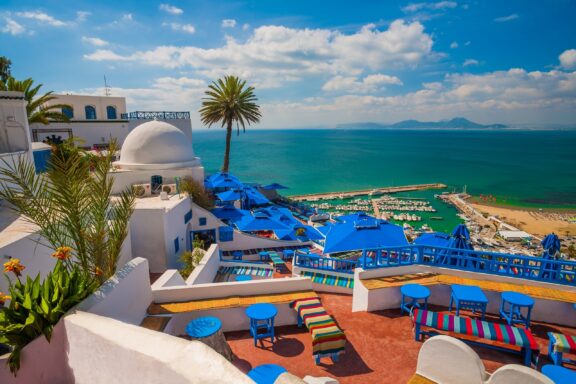
Perched on cliffs overlooking the Mediterranean, Sidi Bou Said is famed for its enchanting atmosphere. Its unique blue-and-white palette has been a muse for many artists, writers, and musicians.
Guests can enjoy the artistic vibe of the town, shop for traditional crafts, or take a break at cafes with panoramic sea views. Given its picture-perfect scenery, Sidi Bou Said is also ideal for photography enthusiasts.
8. National Museum of Carthage
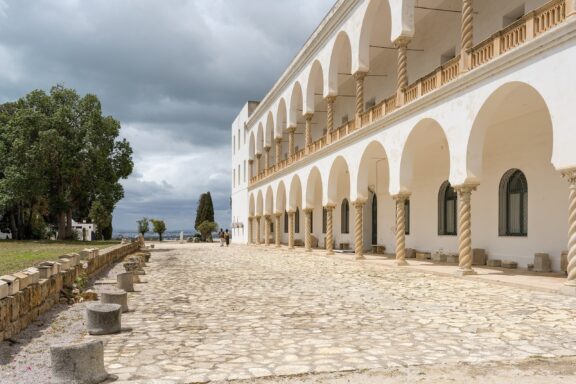
The National Museum of Carthage is an essential stop for anyone interested in ancient civilizations. The museum mainly focuses on illuminating the story of Carthage from its Phoenician origins.
Interactive displays, informative plaques, and occasional guided tours make this museum accessible and educational for all ages. Don’t forget to enjoy the breathtaking views of the surrounding areas from Byrsa Hill.
9. Kasbah Square
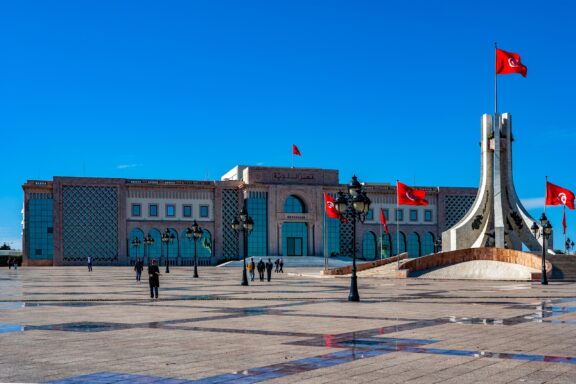
Place de la Kasbah is a significant square in the heart of Tunis’ old Medina. As a focal point for various social and political activities over the years, the square holds a special place in the hearts of locals and is a must-visit for tourists.
Historic buildings, including the Great Mosque of the Kasbah, surround the square. The entire area is a labyrinth of narrow streets and alleys filled with traditional Tunisian architecture.
10. Belvedere Park
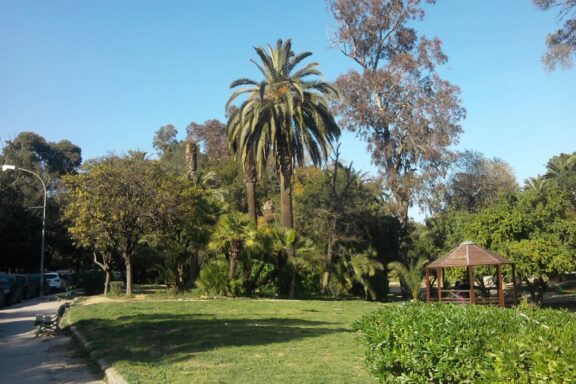
Belvedere Park serves as an oasis of greenery and tranquility in the heart of Tunis. As the largest park in the capital, it offers a much-needed respite from the hustle and bustle of urban life while also being a venue for cultural activities.
Whether you’re a fan of outdoor activities or simply looking for a peaceful corner to read a book, Belvedere Park has something to offer. The park is family-friendly and provides opportunities for jogging, picnicking, or recreational activities.
Frequently Asked Questions
What is the best time to visit Tunis?
The best time to visit is spring (March to May) and fall (September to November), when the weather is mild and pleasant for outdoor activities.
Is Tunis safe for tourists?
While generally safe, it’s always advisable to stay informed about the local situation, exercise caution in crowded areas, and follow the advice of local authorities.
How do I get around the city?
Tunis has a fairly comprehensive public transportation system that includes buses, light rail, and taxis. Ride-sharing services are also available.
Can I easily find English-speaking locals or guides?
While French and Arabic are the most commonly spoken languages, many tour guides and some locals, especially younger people and those in the tourism industry, do speak English.
What kind of cuisine can I expect?
Tunisian cuisine blends Mediterranean and Arab influences, featuring dishes like couscous, tagines, and various seafood options.
Are there any dress codes or cultural norms I should be aware of?
While Tunis is fairly liberal, it’s advisable to dress modestly, especially when visiting religious sites.
What’s the currency, and how do I handle money exchange?
The currency is the Tunisian Dinar. Currency can be exchanged at banks, currency exchange offices, or ATMs.
Final Thoughts
Tunis is a city that offers a rich tapestry of experiences, blending ancient history with modern vitality. From its captivating medina to its bustling business district, the city showcases the complexities and charms that make it the beating heart of Tunisia.
Whether you’re a history buff, a food enthusiast, or someone seeking a unique cultural experience, Tunis has something to offer. Its role as a political, economic, and cultural center makes it not just a destination but a focal point for understanding Tunisia as a whole.
Image Sources and Copyright Information
- Political Map of Tunisia Highlighting Major Cities and Borders: © Peter Hermes Furian/Shutterstock
- Location Pin on Tunis, Tunisia Map: © evan_huang/Shutterstock
- Ancient Roman Bath Ruins Under Blue Sky: © Leonid Andronov/Shutterstock
- Mosque with White Dome Viewed from Rooftop Terrace: © Christophe Cappelli/Shutterstock
- Tunis City Night Skyline Reflection: © skazarphoto/Shutterstock
- Tunis Cityscape at Dusk: © Romas_Photo/Shutterstock
- Bustling Tunisian Market Street: © Travel-Fr/Shutterstock
- Downtown Tunis Commercial District Skyline: © Dacoslett/Wikimedia | CC0 1.0 Universal
- Evening View of Zitouna Mosque Courtyard: © Travel-Fr/Shutterstock
- Interior of Bardo Museum with Exhibits: © posztos/Shutterstock
- Colorful Alley in Tunis Medina: © Charged One/Shutterstock
- Dusk at Avenue Habib Bourguiba with Clock Tower: © Alex Cimbal/Shutterstock
- Sunny Day at St. Vincent de Paul Church: © Romas_Photo/Shutterstock
- Traditional Courtyard with Arches and Mosaic Tiles: © TofStock/Shutterstock
- Coastal View of Sidi Bou Said, Tunisia: © Iurii Dzivinskyi/Shutterstock
- Courtyard of the National Museum of Carthage: © Andreas Wolochow/Shutterstock
- Tunisian Government District with Flags and Monument: © posztos/Shutterstock
- Palm Trees and Gazebo in Belvedere Park, Tunis: © Mohamad Ali Belhaj/Shutterstock